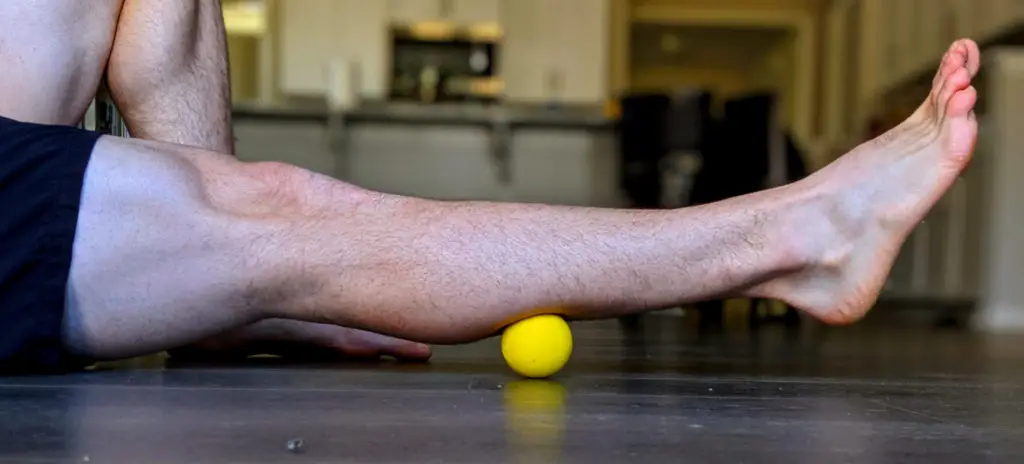Maybe you tweaked your calf muscle running up a steep hill. Or felt a twinge in your chest muscle during a hard set of push-ups.
Whatever the case, here’s what you need to know about fixing muscle pain.
1) Reduce Load
It’s easy to say but harder to do. If running 4 miles caused the injury, running 4 miles again will exacerbate the problem.
3 years ago, I developed quadriceps muscle pain from squatting too heavy, too often. I kept squatting and my legs kept hurting.
Pain persisted over 1 year until stay-at-home orders kept me out of the gym long enough for my muscles to heal.

To bounce back from muscle pain, it’s crucial to reduce the load (running, biking, lifting, etc.) enough for the injured muscle to recover. Create an environment for healing.
2) Soft Tissue Treatment
Tight, sore spots develop in injured muscles. These areas, called trigger points, cause local and referred pain.

For example, trigger points in the infraspinatus muscle (located on the shoulder blade) send pain into the arm. Referred pain from the infraspinatus can mimic symptoms from a pinched nerve in the neck and carpal tunnel syndrome!

My favorite soft tissue treatments are:
- Self-treatment with a lacrosse ball
- Hands-on manual therapy
- Using a massage gun (percussion therapy)
- Trigger point dry needling
A few months ago, dry needling helped me recover from a latissimus dorsi injury in one week!
3) Add Load
Once acute pain subsides, re-loading the muscle and getting stronger is crucial for recovery. Resistance training remodels and rebuilds the muscle. Plus, strength training is the best way to reduce future injury risk (Zwolski 2017).
After injury, start with light strengthening exercises. Select exercises that target the injured muscle and progress them slowly.

I prefer free weights and weight machines because it’s easy to increase the load. Progressive loading is harder to do with resistance band exercises.
Why Not Stretch?
Static stretching is overrated. It doesn’t prevent injury or soreness. And it’s not a great way to recovery from muscle pain either.
Light, dynamic mobility work is fine. Gently moving the injured area will prevent the muscle from healing in a shortened position.
But aggressive stretching disrupts healing and can prolong recovery. Stretching has a limited role in bouncing back from muscle injuries.
Should I Train Through Pain?
Experts disagree on this one. Some encourage pain-avoidance during rehab exercises. Others deem mild pain acceptable during training. Advocates of training through pain point to a recent study that found training into pain leads to faster muscle strength recovery after hamstring strains (Hickey 2019).
Regardless, it’s crucial to monitor pain during rehabilitation and avoid severe pain during exercise.
How Long to Recover From a Muscle Strain?
It varies. Grade 1 muscle strains are mild. Recovery can happen within a few days.
Grade 2 muscle injuries are more serious. They can persist for several months.
Grade 3 muscle strains involve complete tearing of the muscle. These injuries may require surgery. With or without surgery, grade 3 injures require extensive rehab.
It’s Like an Iceberg
Once acute muscle pain subsides, it’s tempting to rush back into sports and exercise. At this point, the muscle injury is like an iceberg. Pain is minimal. It feels like it’s back to 100%.

But there’s a lot lurking under the surface. The muscle is still healing. It’s susceptible to injury if it’s re-loaded too quickly.
For best results, start slow and gradually increase exercise intensity. And work with an expert–like a physical therapist who treats sports and orthopedic injuries on a daily basis.
Readers: Have you dealt with muscle injury? How did you get it to heal?
For more practical tips to manage pain and recover from injury, join the free, fast-growing Facts & Physio Newsletter. Plus, get The Recovery Checklist when you sign up.

